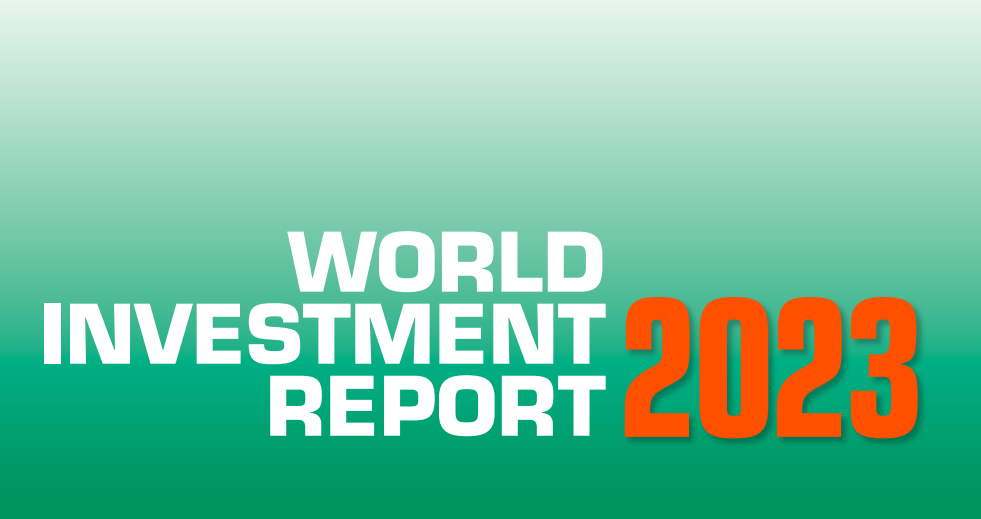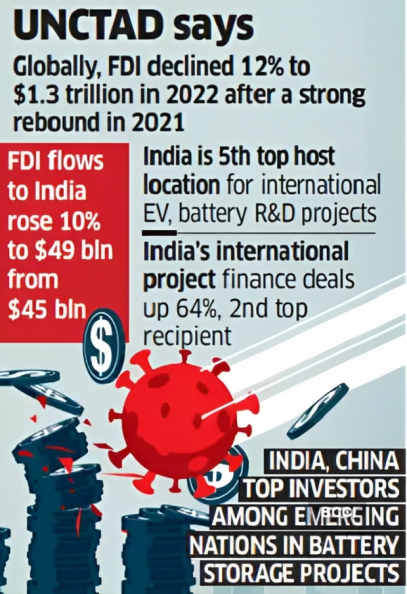Free Courses Sale ends Soon, Get It Now


Free Courses Sale ends Soon, Get It Now



Copyright infringement not intended
Context: According to the World Investment Report 2023 released by the United Nations Conference on Trade and Development (UNCTAD), foreign direct investment (FDI) in developing countries in Asia remained at $662 billion in 2022, accounting for about half of the global inflows.
Details
Highlights of the Report

United Nations Conference on Trade and Development (UNCTAD)
Must-Read Articles:
ASEAN: https://www.iasgyan.in/daily-current-affairs/asean
FDI IN INDIA: https://www.iasgyan.in/daily-current-affairs/fdi-in-india
|
PRACTICE QUESTION Q. What is the difference between Foreign direct investment (FDI) and Foreign portfolio investment (FPI)? A) FDI involves acquiring a lasting interest and a degree of control or influence over a foreign enterprise, while FPI involves acquiring a temporary interest and no control or influence over a foreign enterprise. B) FDI involves acquiring a temporary interest and no control or influence over a foreign enterprise, while FPI involves acquiring a lasting interest and a degree of control or influence over a foreign enterprise. C) FDI involves acquiring a lasting interest and no control or influence over a foreign enterprise, while FPI involves acquiring a temporary interest and a degree of control or influence over a foreign enterprise. D) FDI involves acquiring a temporary interest and a degree of control or influence over a foreign enterprise, while FPI involves acquiring a lasting interest and no control or influence over a foreign enterprise. Answer: A Explanation: FDI and portfolio investment are two types of cross-border investment. FDI involves acquiring at least 10% of the voting power or equity of a foreign enterprise, which implies a lasting interest and a degree of control or influence over its management and operations. Portfolio investment involves acquiring less than 10% of the voting power or equity of a foreign enterprise, which implies a temporary interest and no control or influence over its management and operations. |
© 2024 iasgyan. All right reserved